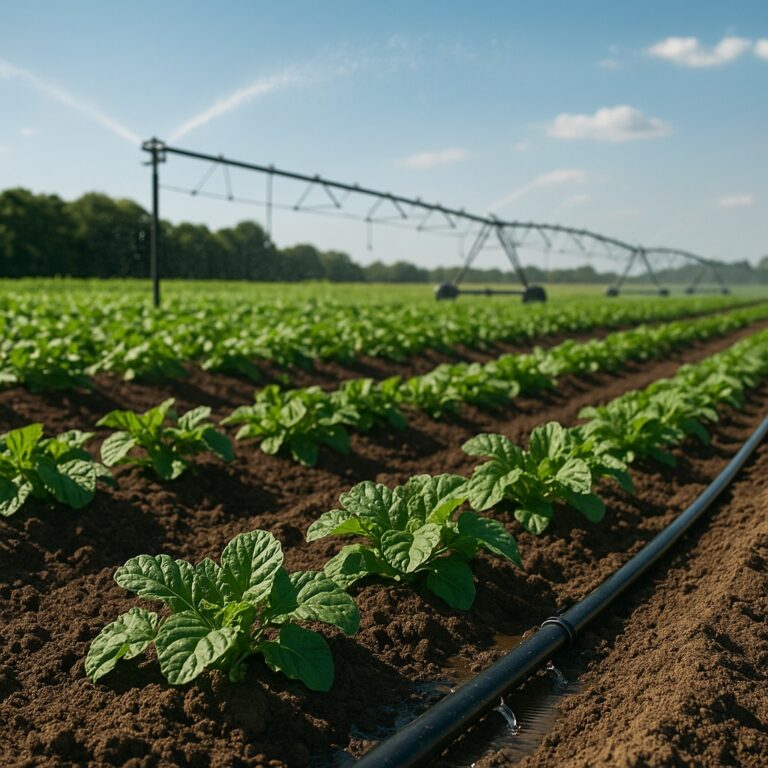Anúncios
Soil is the foundation of any successful farming operation. Whether you’re growing grains, vegetables, or pastures, the quality of your soil directly affects crop yield, plant health, and long-term sustainability. But knowing your soil type or texture is not enough. To truly understand what your land needs, you must go deeper—starting with a professional soil analysis.
Soil tests might look intimidating at first: numbers, abbreviations, pH values, nutrients you’ve never heard of. But these reports are gold mines of information when properly understood. With the right interpretation, you’ll be able to correct imbalances, avoid unnecessary expenses on fertilizers, and build a soil management plan that actually works.
In this article, we’ll guide you through every step of reading a soil test report with clarity and confidence. Even if it’s your first time, you’ll finish equipped to make informed decisions for your farm. Let’s dive in and turn that report into results.
What is a soil analysis and why it matters
A soil analysis is a scientific assessment of your soil’s nutrient content, pH level, organic matter, and other essential characteristics. It provides a snapshot of soil health and helps you determine what amendments are needed to optimize plant growth. Whether you’re managing a large farm or a small plot, soil testing is the first step toward informed decision-making.
Without soil analysis, fertilization and soil correction become guesswork. You might end up spending money on products you don’t need—or worse, applying the wrong nutrients, which can damage crops and degrade the soil. A well-timed test gives you the confidence to invest wisely and sustainably.
Collecting and sending soil samples: the foundation of reliable results
Before interpreting a report, you need a proper sample. The accuracy of your analysis depends heavily on how the sample was collected. Always use a clean soil probe or shovel, and collect samples from 10–15 spots across your field to get a representative mix. Depth matters: for most crops, collect from the top 6 to 8 inches of soil.
Mix the collected soil in a clean bucket, remove debris like roots or stones, and send the composite sample to a certified lab. Label it with the field name and intended crop, and provide any additional information the lab requests. This attention to detail ensures your test results are precise and relevant.
Understanding the basic soil test report layout
Once the lab processes your sample, you’ll receive a report that includes columns for soil properties, nutrient levels, sufficiency ratings, and recommendations. While formats vary between labs, most reports include:
- pH and buffer pH
- Organic matter percentage
- Macronutrients (N, P, K, Ca, Mg, S)
- Micronutrients (Fe, Mn, Zn, Cu, B)
- Cation exchange capacity (CEC)
- Base saturation percentages
The key to understanding the report is knowing what each section means and how it relates to your crop’s health and productivity.
Key components of a soil analysis explained
Let’s break down the critical components:
pH – Indicates how acidic or alkaline your soil is. Most crops prefer a pH between 6.0 and 7.0. Outside this range, nutrient availability can be compromised.
Organic Matter (OM) – A measure of decomposed plant and animal residue in the soil. High OM improves water retention, nutrient availability, and microbial activity.
Cation Exchange Capacity (CEC) – Describes the soil’s ability to hold and exchange positively charged nutrients. Higher CEC values indicate better fertility potential.
Macronutrients – Nitrogen (N), Phosphorus (P), and Potassium (K) are essential for plant growth. Calcium (Ca), Magnesium (Mg), and Sulfur (S) also play vital roles.
Micronutrients – Elements like Zinc (Zn), Manganese (Mn), Iron (Fe), and Copper (Cu) are needed in smaller amounts but are still crucial for plant health.
Base Saturation – Represents the percentage of the CEC occupied by essential nutrients (Ca, Mg, K, and Na). Balanced base saturation is important for root development and nutrient uptake.
Step-by-step guide to interpreting your soil test
- Start with the pH
Check whether the pH falls within the ideal range for your intended crops. If it’s too low (acidic), lime may be needed. If too high (alkaline), sulfur or acid-forming fertilizers may help. - Evaluate Organic Matter
Aim for 3–6% OM. Below 3% might mean poor nutrient retention; consider cover cropping or compost additions. - Read the Macronutrient Levels
Compare each nutrient to its optimal range. If levels are low, follow the lab’s recommendation for application rates. If they’re high, you might skip or reduce fertilization. - Check the Micronutrient Status
Deficiencies in elements like zinc or boron can limit yield even if macronutrients are adequate. Foliar applications can correct these quickly. - Look at CEC and Base Saturation
High CEC means your soil holds nutrients well, while low CEC means you’ll need more frequent fertilization. Ideal base saturation values: Ca (65–80%), Mg (10–15%), K (3–5%). - Review Lab Recommendations
Most reports include fertilization suggestions. Use them as a guide, but adapt based on your crop rotation, irrigation, and past field performance.
Common deficiencies and how to correct them
- Low pH – Apply agricultural lime (calcitic or dolomitic).
- High pH – Use elemental sulfur or acid-forming fertilizers.
- Low Nitrogen – Apply urea, ammonium nitrate, or use legumes to fix nitrogen naturally.
- Low Phosphorus – Use MAP (Monoammonium phosphate) or DAP (Diammonium phosphate).
- Low Potassium – Apply muriate of potash or sulfate of potash.
- Micronutrient issues – Use chelated products or foliar sprays for quicker absorption.
Always verify compatibility with your soil and crop type before applying any amendment.
Using your soil analysis to make smart fertilization decisions
Fertilization plans should be precise—not one-size-fits-all. Use the soil test to determine not only what nutrients are needed, but also how much and when to apply them. Split applications of nitrogen, for example, can reduce leaching and improve uptake.
Also consider the timing. Apply phosphorus before planting to support early root development. Potassium, essential for drought resistance, should be in place before major growth stages.
Don’t forget to adjust your plan based on weather, crop performance, and follow-up testing. Data-driven decisions always outperform guesswork.
Mistakes to avoid when reading a soil test
- Ignoring pH and OM – These foundational factors affect everything else in the report.
- Misinterpreting “high” levels – Excessive nutrients can be as harmful as deficiencies.
- Relying solely on color-coded indicators – Always read the numbers and units.
- Applying blanket fertilizer rates – Use custom recommendations based on your specific field.
- Neglecting micronutrients – They might be small in quantity but big in impact.
Avoiding these pitfalls can save money and protect your soil’s long-term health.
When to retest and how to track changes over time
Soil is dynamic. Nutrient levels change with crop uptake, rainfall, erosion, and fertilizer use. A good rule of thumb is to test:
- Every 2–3 years for stable fields with consistent cropping systems.
- Annually for high-value crops or newly amended fields.
- Seasonally if major corrections are being made.
Keep detailed records of each test, the inputs applied, and your yield results. Over time, this database becomes one of your most powerful tools for improving productivity.
Final tips for improving soil health over the long term
- Rotate crops to prevent nutrient depletion and reduce pest pressure.
- Plant cover crops to add organic matter and protect against erosion.
- Minimize tillage to preserve soil structure and microbial life.
- Apply compost or manure to build OM and replenish nutrients.
- Test regularly and use the results to guide every soil management decision.
Healthy soil is not a one-time achievement—it’s a continuous process of care, observation, and adaptation.
Conclusion
Interpreting a soil analysis doesn’t require a degree in chemistry—it just takes practice and patience. With each report, you’ll become more confident in identifying what your land needs and how to respond. By using soil testing as a regular part of your farm planning, you’re not just feeding your crops—you’re building a legacy of productivity and sustainability.
FAQ – Frequently Asked Questions
1. How often should I test my soil?
For most farms, every 2 to 3 years is ideal. If you’re making major changes or growing high-value crops, consider testing annually.
2. Can I interpret a soil test without help?
Yes, especially with a guide like this. Still, local agronomists can provide valuable insights based on regional experience.
3. What if my soil test shows everything is “low”?
Don’t panic. Focus on pH and organic matter first, then tackle macronutrients and micronutrients strategically over time.
4. Are at-home soil tests reliable?
They’re useful for basic checks, but lab tests are far more accurate and detailed—especially for nutrient management planning.
5. What’s the biggest mistake new farmers make with soil tests?
Not testing at all—or misinterpreting the data and overapplying fertilizers. Always use test results as a tool, not a shortcut.



